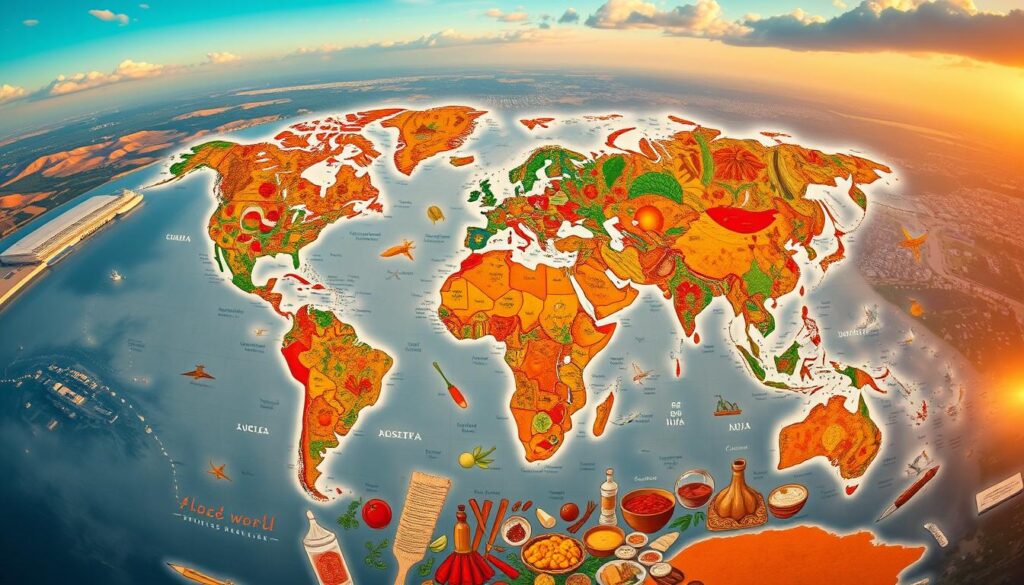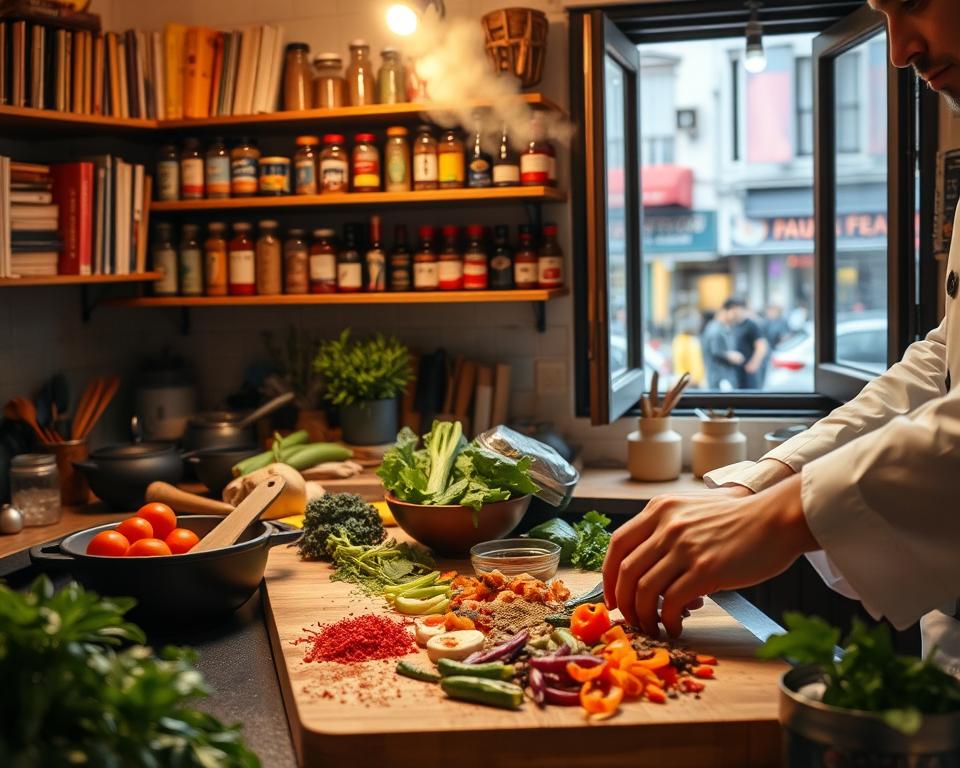Анунсиос
Your quick Foodways guide starts here: what matters in culture, archives, and everyday cooking in 2025?
Want a hub that turns curiosity into action? This resource gathers curated resources, clear steps, and trustworthy content so you can move from reading to doing in one visit.
You will see why food is more than recipes. It reveals how people live, what they value, and how communities pass knowledge across generations.
This short introduction maps what follows: clear definitions, hands-on research methods, and practical tips for cooks, students, librarians, and creators.
Expect concise sections, step-by-step bullets, and links to archives and organizations so you can plan projects, test recipes, and document findings with confidence. Read on — you’ll leave ready to act.
Анунсиос
Introduction
In 2025, food, technology, and community archives converge to reshape how you explore culinary culture. This resource helps you move from curiosity to concrete research and creation. It shows how digital access and local storytelling make cultural materials easier to find and use.
Food connects daily choices to migration, memory, and place. Whether you cook at home, document a family recipe, or build a class project, you can read cultural meaning in a dish, a market list, or a recipe’s language. That perspective makes studies and research practical for many people.
The Resource Hub saves time by organizing resources, methods, and examples into clear content sections. You will find definitions, hands-on methods, and trusted organizations mapped so you can scan then dive deeper.
Анунсиос
Current momentum matters: digitized collections, community storytelling, and simple tools widen access to materials once available only in person. Use this working guide as a living reference you return to as your questions evolve.
Foodways guide context for 2025
- Practical resources and curated links for research and projects.
- Examples that show cultural meaning in everyday meals.
- Steps to help you document, analyze, and share findings.
What “foodways” means now: definitions, scope, and 2025 context
This section defines how culture, memory, and daily meals connect in contemporary food studies. You will get a clear sense of scope and a practical way to tell cultural questions from technical ones.
Foodways vs. food science
Food science focuses on chemistry, microbiology, and engineering. It asks how foods work and how to make them safe or scalable.
Food studies asks what food means. It looks at rituals, identity, and social practice. UNC–Chapel Hill and other programs teach these methods in the U.S.
Key arenas to analyze
- Production and sourcing: farms, markets, and supply chains.
- Preservation and presentation: methods, plating, and service.
- Consumption and folklore: everyday meals, rites, and stories.
Remember: a single source might be a handwritten card, a small booklet, a social post, or a catalog entry at your local library. Books and small publications help date ideas and trace change.
Use this short ръководство to decide whether your question is about meaning or mechanism, then choose methods accordingly.
How to research foodways: a practical Foodways guide
Start your investigation by looking closely at what the recipe lists and where ingredients were obtained. Small details like a brand, a home garden note, or a local grocer reveal seasonality, budgets, and access.

Read structure and cookability
Read a recipe line by line. Check measurements, verbs, and timing. These clues show the intended audience and skill level for cooking.
Everyday vs. special-occasion
Note serving size, cost, and mentions of holidays or guests. These signals tell you whether a dish was for daily meals or celebrations.
Time, place, and arguments
Match dates, product names, and publisher details to place the source in context. Use small technical details—technique, spice, or format—to build clear claims about cuisine or identity.
Fill gaps and document sources
List missing steps or unclear temps. Plan interviews, compare similar cookbooks, or visit a local library to find answers. Keep every note tied to a foodways question so your research stays focused.
- Examine authorship, date, and signs of use in cookbooks.
- Study typography, handwriting, and graphics for audience clues.
- Use archival archival resources or library alternatives when agency sites are offline.
Trusted resources and real examples to explore today
Turn to established centers and university programs to find usable resources, recordings, and archives you can cite or adapt for projects.
Southern Foodways Alliance
The Southern Foodways Alliance at the Center for the Study of Southern Culture documents changing culinary life in the American South. You can listen to oral histories, watch films, and read publications that place храна in migration, labor, and memory.
Institute of Child Nutrition
The Institute of Child Nutrition at the University of Mississippi offers applied research, training, and technical materials for U.S. child nutrition programs. Use their briefs and modules to frame policy context in classroom work or community projects.
University programs and archives
UNC–Chapel Hill teaches food and cultural studies and provides library guides and course lists you can mirror. The University of Mississippi’s Department of Nutrition and Hospitality Management links academic study to industry practice and service.
Apply these resources: sample mini-projects
- Transcribe a family recipe and compare it to an SFA oral history to track ingredient and method changes.
- Pick two community cookbooks and one trade book, then chart audience, price, and marks of use in a short report.
- Pair an ICN training brief with a local school menu to map how budgets and policy shape what people eat.
Next steps: bookmark institutional pages, note contact emails for permissions, and set a reminder to check new releases from these organizations.
Заключение
A single recipe note can open a larger story about people and place.
You leave with clear, usable content and steps you can repeat. Pick one recipe to analyze. Take one set of notes. Contact one archive or local program.
Ground your work in cookbooks, interviews, and documents. That makes your findings credible and rooted in everyday practice.
Keep the focus on culture and practice: study how people cook, share, and remember. Avoid health claims and stay factual.
Plan short reviews of sources as collections grow. Return to this guide when your questions deepen.
Start today. Even a single page of notes can deepen your understanding of food and tradition.



